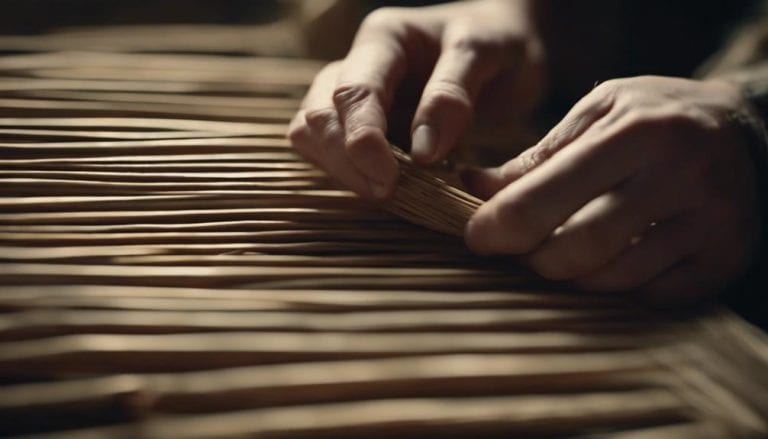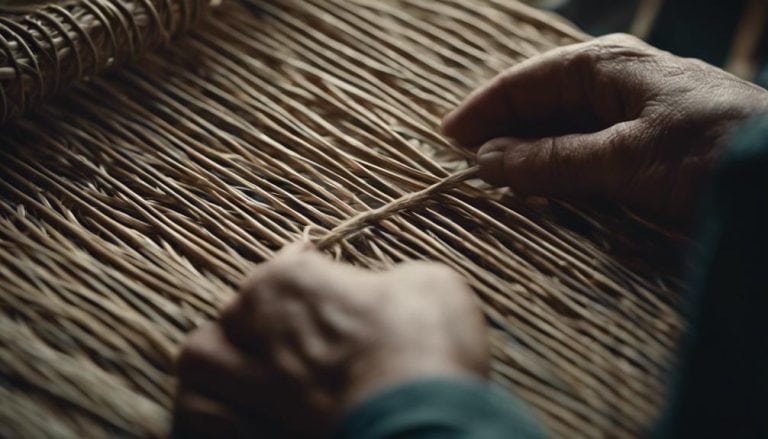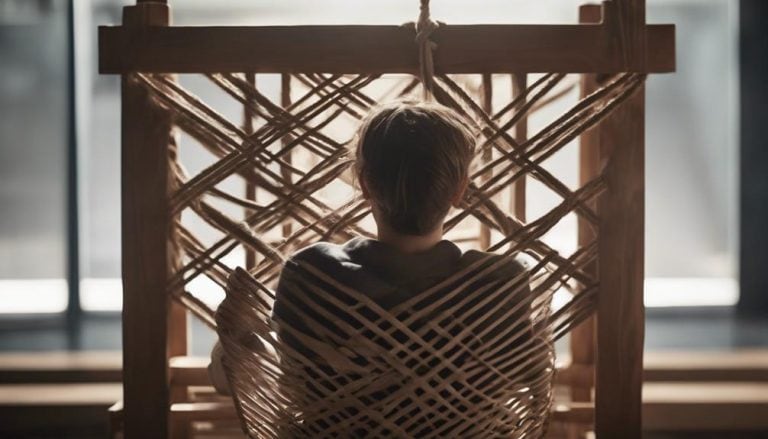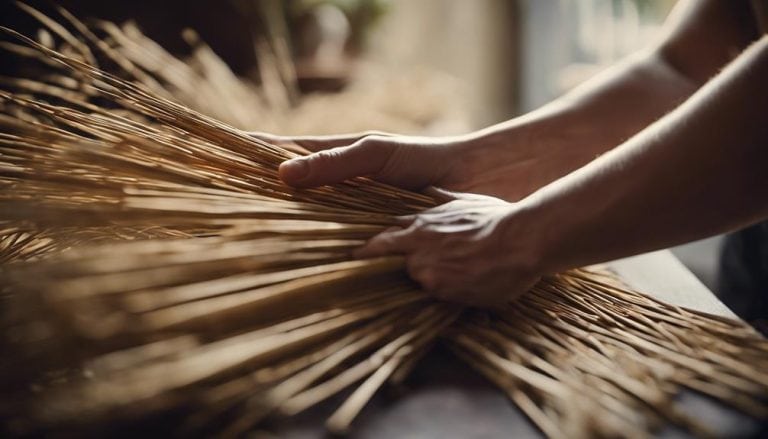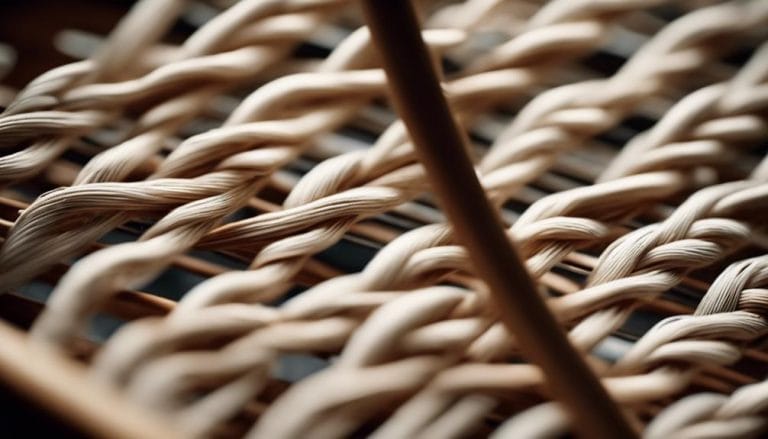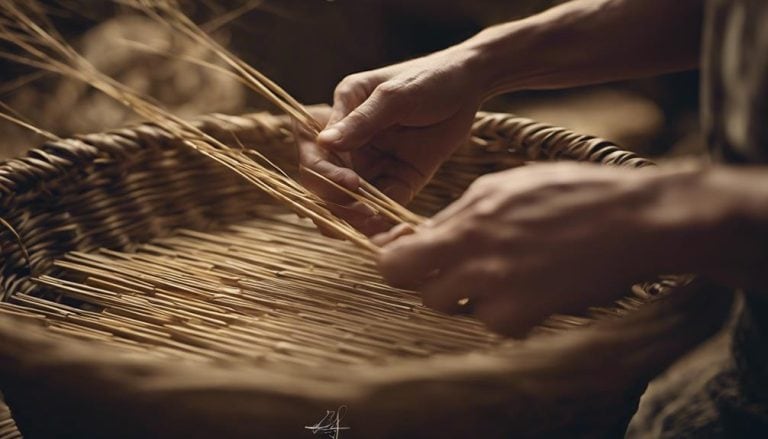How to Craft With Danish Cord
Have you ever wondered how to elevate your crafting skills with Danish cord? The intricacies of weaving with this material can unlock a world of possibilities. Each stage is important in Danish cord crafting, from mastering the initial steps to achieving a flawless finish.
But what truly distinguishes a novice from a pro lies in the nuances of tension control and pattern adjustments. Are you ready to unravel the secrets of creating stunning Danish cord pieces that stand the test of time?
Crafting with Danish cord involves weaving it through furniture frames for a traditional and durable finish, creating beautiful and functional pieces. This technique requires patience and attention to detail, resulting in unique and long-lasting furniture.
Key Takeaways
- Danish cord techniques include cow-hitch knots for sturdy seats.
- Weaving front and back rails ensures structural harmony.
- Experiment with advanced patterns for unique designs.
- Finish by tacking down and securing the cord for a polished look.
Choosing the Right Danish Cord Supplies
When embarking on a crafting project with Danish cord, ensuring you have the right supplies is crucial for achieving a successful and satisfying outcome. Danish cord typically comes in 1/8 inch diameter coils, available in laced and unlaced varieties tailored for different weaving techniques.
Choosing the correct type is paramount for chair seats, which usually require around 2 pounds of Danish cord for re-weaving. The chair’s front rail, back rail, and side rails are crucial in determining the amount and type of cord needed. Understanding the original weave pattern is essential when re-doing a chair with a Danish cord, ensuring accuracy in re-weaving.
Familiarizing oneself with techniques like the cow hitch for securing the cord properly is also vital. Depending on the project requirements, opting for the right type of cord, whether laced or unlaced, sets the foundation for a sturdy and visually appealing result.
Understanding Basic Weaving Techniques
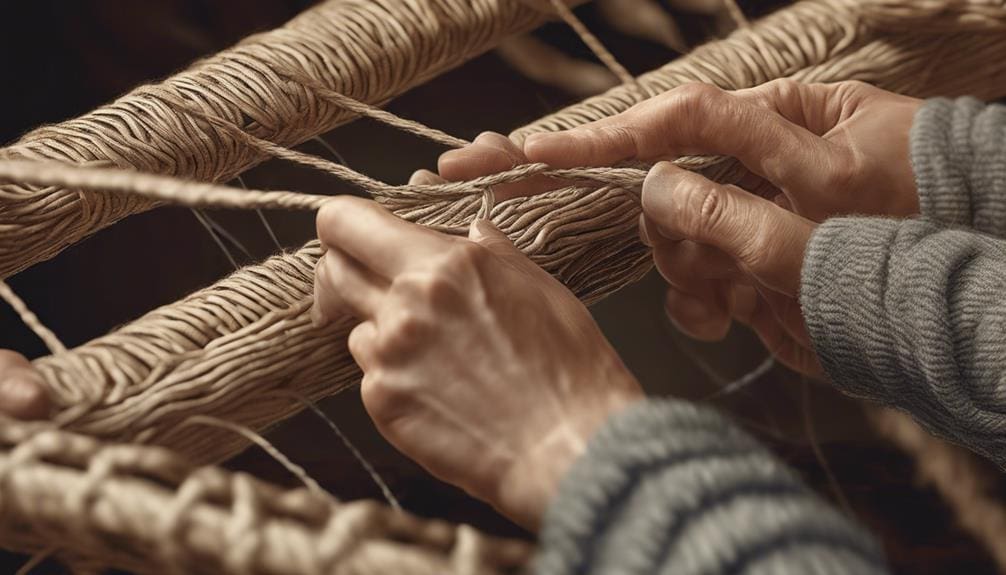
When employing basic weaving techniques with Danish cord, I frequently utilize cow-hitch knots to establish a dense and sturdy seat. Understanding the intricacies of Danish cord weaving is crucial for creating durable and visually appealing woven seats. Ensuring an odd number of warp centerlines for consistent patterns is essential to achieve this.
The weaving process typically involves front rail weaving, back rail wrapping, and side-to-side weaving techniques. Danish cord, a twisted treated paper material, is a key element in iconic Danish furniture designs by renowned designers like Hans Wegner.
Basic Weaving Techniques Table:
| Technique | Description | Importance |
|---|---|---|
| Front Rail Weaving | Weaving the cord across the front rail | Provides seat structure |
| Back Rail Wrapping | Wrapping the cord around the back rail | Enhances seat durability |
| Side-to-Side Weaving | Weaving the cord from side to side | Adds stability to the seat |
Creating Functional Danish Cord Pieces
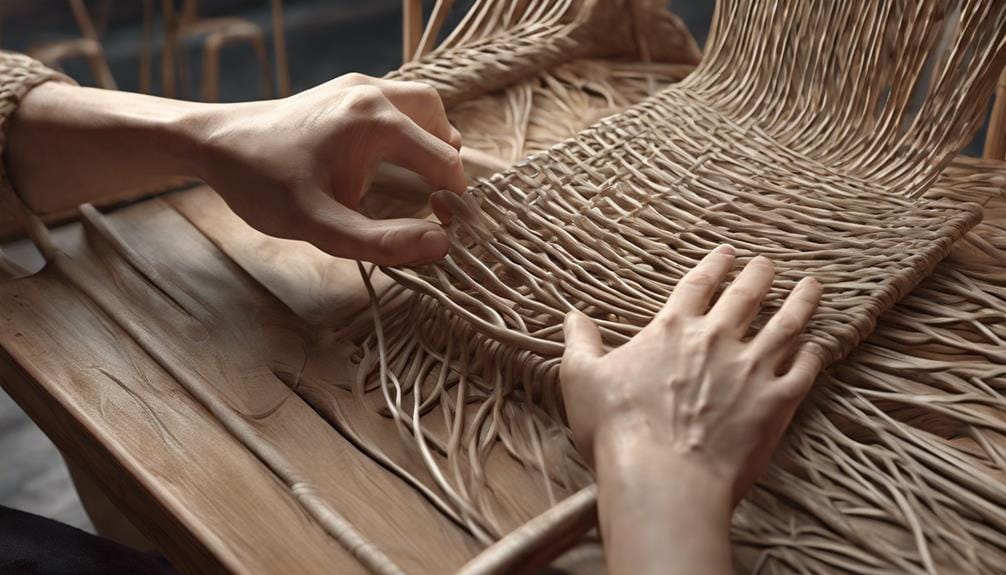
The artistry in crafting with Danish cord lies in creating functional pieces that seamlessly blend durability and aesthetic appeal. Danish cord, with its intricate weaving techniques and durable composition, allows for crafting pieces that not only serve a practical purpose but also exude elegance and sophistication.
- Weaving Mastery: Danish cord weaving techniques like basket weaves elevate the functional pieces into pieces of art, showcasing the skill and precision of the crafter.
- Front and Back Harmony: Ensuring the front and back of the Danish cord piece are woven with equal care and attention creates a cohesive and visually pleasing result.
- Rail Resilience: Reinforcing the rails of seats and sides with a Danish cord ensures longevity and durability, adding to the piece’s functional aspect.
- Side Strength: Weaving the sides of Danish cord pieces meticulously enhances their aesthetics and contributes to their overall structural integrity.
Crafting functional Danish cord pieces involves a delicate balance of weaving techniques and design elements. The result is items that serve their purpose and stand as a testament to the craftsmanship behind them.
Mastering Advanced Weaving Patterns
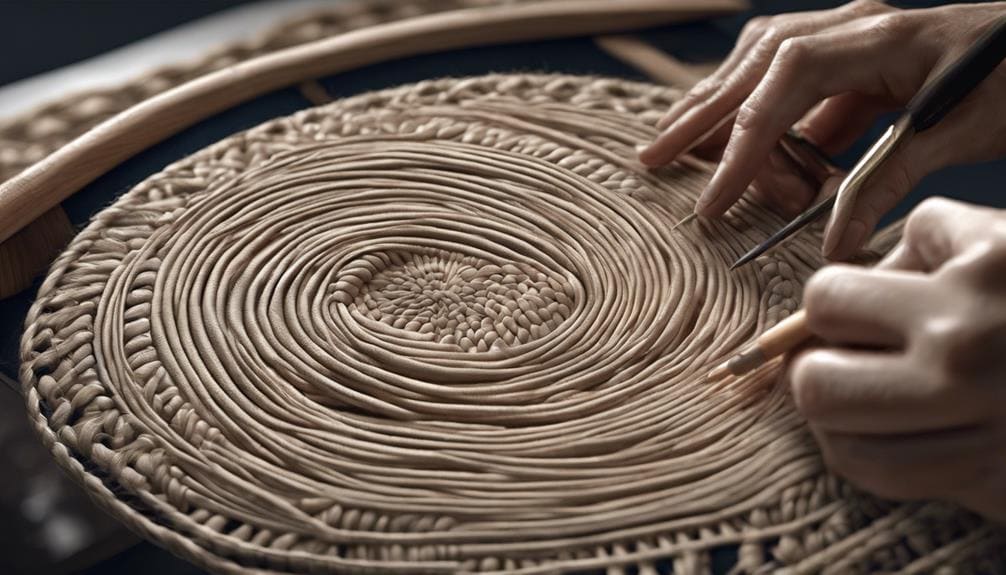
Mastering advanced weaving patterns in Danish cord involves honing intricate techniques like double rails and cow-hitch knots, focusing on consistent spacing and tension throughout the weaving process. Precision is key when tackling these complex patterns.
Begin by wrapping the front rail with a Danish paper cord, ensuring a tight and even foundation for the weaving. Utilize layout marks to guide the placement of each weave, maintaining uniformity in the pattern.
Double rails add depth and durability to the seat, enhancing its aesthetic appeal and structural integrity. The cord’s thickness and strength are crucial in achieving the desired outcome; 2-lb. rolls are commonly used for intricate projects.
Experimenting with various weaving styles allows for the creation of unique and visually striking designs. By mastering these techniques and incorporating innovative patterns, artisans can craft Danish cord seats that stand out for their beauty and craftsmanship.
Tips for Finishing Danish Cord Projects
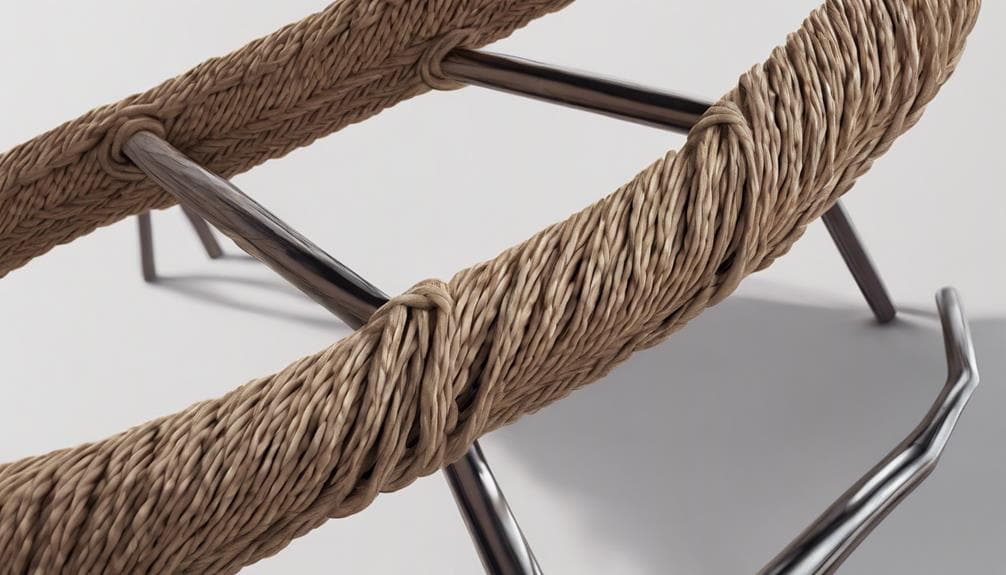
To achieve a professional and polished look for your Danish cord projects, consider incorporating these essential tips for finishing that will elevate the overall appearance and longevity of your creations.
- Seat Wrapping: When finishing your Danish cord project, wrap the cord neatly around the frame’s edges to create a seamless and clean look.
- Tack the Cord: Secure the cord firmly by tacking it down along the edges, ensuring it stays in position and maintains its tension.
- Pull the Cord Taut: Pull the cord tightly to maintain consistency and prevent any sagging or looseness as you reach the other side of the frame.
- Use Nails at the End of the Cord: To secure the end of the cord neatly, consider using nails to keep it in place and prevent unraveling. This will give your Danish cord project a professional finish.
Frequently Asked Questions
What Is the Use of Danish Cord?
Danish cord is used beyond chair repair. It’s versatile, ideal for basket weaving, outdoor furniture, and home decor. DIY projects benefit from its strength and aesthetic appeal. Danish cord embodies Scandinavian design and sustainable materials.
Which Is Better Laced or Unlaced Danish Cord?
Unlaced Danish cord offers versatility in design, allowing for creative exploration and unique patterns. Laced cord provides a classic look with traditional weaving techniques. Choosing between them depends on desired aesthetics and project goals.
What Is the Nail Spacing for Danish Cord Weaving?
Nail spacing for Danish cord weaving is crucial for achieving a professional and durable seat. Consistent 1-inch spacing ensures a tight weave pattern. Proper spacing enhances both aesthetics and functionality, leading to a high-quality result.
How Much Danish Cord Do I Need?
To determine the amount of Danish cord needed, measure accurately based on chair size, weaving pattern, and design. Consider color options, maintain proper tension, and use weaving tools for advanced patterns. Beginners can start with simple projects.
Conclusion
Weaving with Danish cord is like painting a masterpiece with threads, each strand carefully intertwined to create a work of art. With attention to detail and practice, anyone can master crafting with a Danish cord.
So grab your supplies, follow the weaving techniques, and let your creativity soar as you create functional and beautiful pieces that will stand the test of time.
Dive into Danish cord crafting and watch your skills bloom like a carefully woven tapestry.


